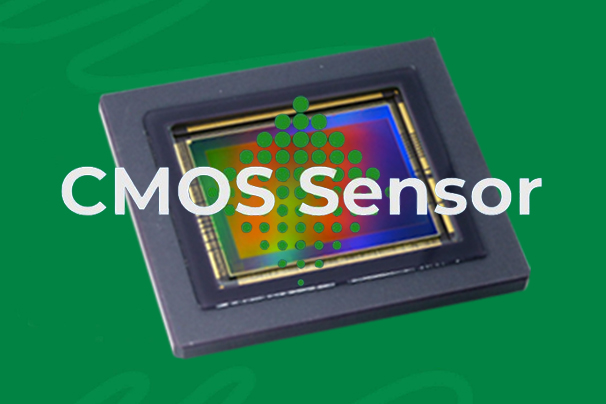What is a CMOS sensor? Image sensors are semiconductor devices that are used to transform optical images into digital signals. Those are used extensively in optical devices and digital cameras. In recent times, image sensors have been available in two types: CCD sensors and CMOS sensors. However, in this article, we will be focusing on the CMOS sensor.
CMOS, known as complementary metal oxide semiconductor image sensors, is an image sensor type that transforms light into electrical charges. The electrical output signal is now processed to help create images. CMOS is commonly used in smartphones, digital cameras, and other various image devices.

We can also say it is a type of electronic chip that is used to convert photons into electrons just for digital processing. You can also find these electronic chips in astronomical telescopes, scanners, and barcode readers.
How Does it Work?
In simple terms, a CMOS sensor is like the eye of your camera, but it’s not designed with traditional film. Instead, it’s a special type of chip inside digital cameras and smartphones that captures images. It’s a bit like a tiny electronic grid filled with millions of light-sensitive pixels.
When you take a photo with your phone or digital camera, each pixel on the CMOS sensor records the amount of light it receives and converts it into a digital signal. This signal is then processed by the camera’s electronics to create the image on your screen. So, we can say the CMOS sensor is the magic behind turning light into pictures on your digital devices.
Consumer-level cameras come with additional parts like memory storage, LCD screens, and buttons for controlling settings. However, machine vision cameras usually don’t have these listed features.
CMOS Sensor Design
In a complementary metal oxide semiconductor image sensor, light hitting each pixel produces a charge, which is then transformed into a voltage. This voltage signal is sent through rows and columns to a converter chip that changes it into digital data.
This sensor has a photodiode and three transistors at each pixel. These transistors do different jobs, like activating the pixel, amplifying the signal, and selecting which data to send. The way CMOS sensors send data can create a rolling shutter effect. Where different parts of the image are captured at slightly different times. However, they can achieve a global shutter with some extra components, capturing all pixels simultaneously.
One disadvantage of CMOS sensors is that they can’t use micro-lenses. This reduces their ability to gather light efficiently. This, combined with variations between pixels, can lead to shallow image quality compared to CCD sensors.
CMOS Sensor Types
There are two types of this image sensor. And they are passive pixel sensors and pixel sensors.
Passive Pixel Sensor
Meanwhile, in these sensors, every passive pixel contains an access transistor and a photodiode. They are organized in a grid with rows and columns and share access and output wires. At the end of every column, there’s an amplifier. However, these sensors do have drawbacks like limited scalability, slow readout, and high noise. To solve these issues, adding an amplifier to each pixel can be a good solution. While passive pixel CMOS sensors turn photons into voltage, they suffer from noise during image development. This is a significant drawback of this sensor type.
Active pixel sensor
An Active Pixel Sensor (APS) is a type of image sensor that consists of pixel sensors. Each pixel has its amplifier and photodetector. Among APS, the CMOS APS is well known for its applications in DSLRs, digital cameras, and many more.
It’s referred to as CMOS APS because it’s made using the CMOS manufacturing process. Very similar to CCD (charge-coupled device), APS sensors are also known as active pixel image sensors.
In addition, the CMOS APS detects light with a photodetector, changes it into an electrical signal, and amplifies it using transistors. And then it transfers it through fixed wires. Its applications include webcams, motion capture, X-ray imaging, cameras, endoscopy cameras, and digital radiography. Top of Form
Advantages and disadvantages
The advantages and disadvantages of this image sensor include the following:
Advantages
- Affordable
- Also, lower power consumption
- Produces good HD videos
- They are used in tablets, phones, and more.
- The imager has an incredible performance.
- Frame rates are high.
- Strongly reduces blooming
- It has a higher sensitivity in the NIR range.
- A higher reliability image will come from inferior dark noise.
- The camera’s size is small, as the readout login may include the same chip.
- And many more.
Disadvantages
- Image quality and homogeneity are low.
- The images can be grainy sometimes, and the sensors are more susceptible to noise.
- The sensors make use of more light for a good image.
- Lastly, every pixel executes its conversion on this sensor.
The above is everything you need to know about CMOS sensors. This includes how it works, the design, types, advantages, and disadvantages.
